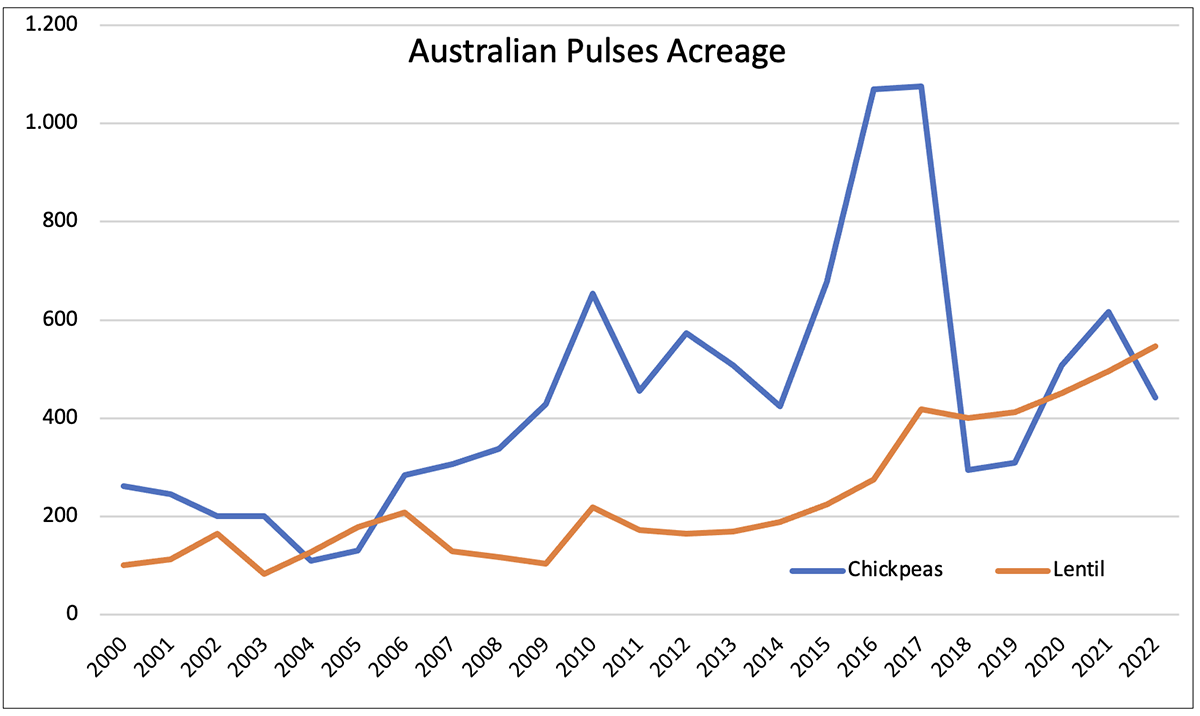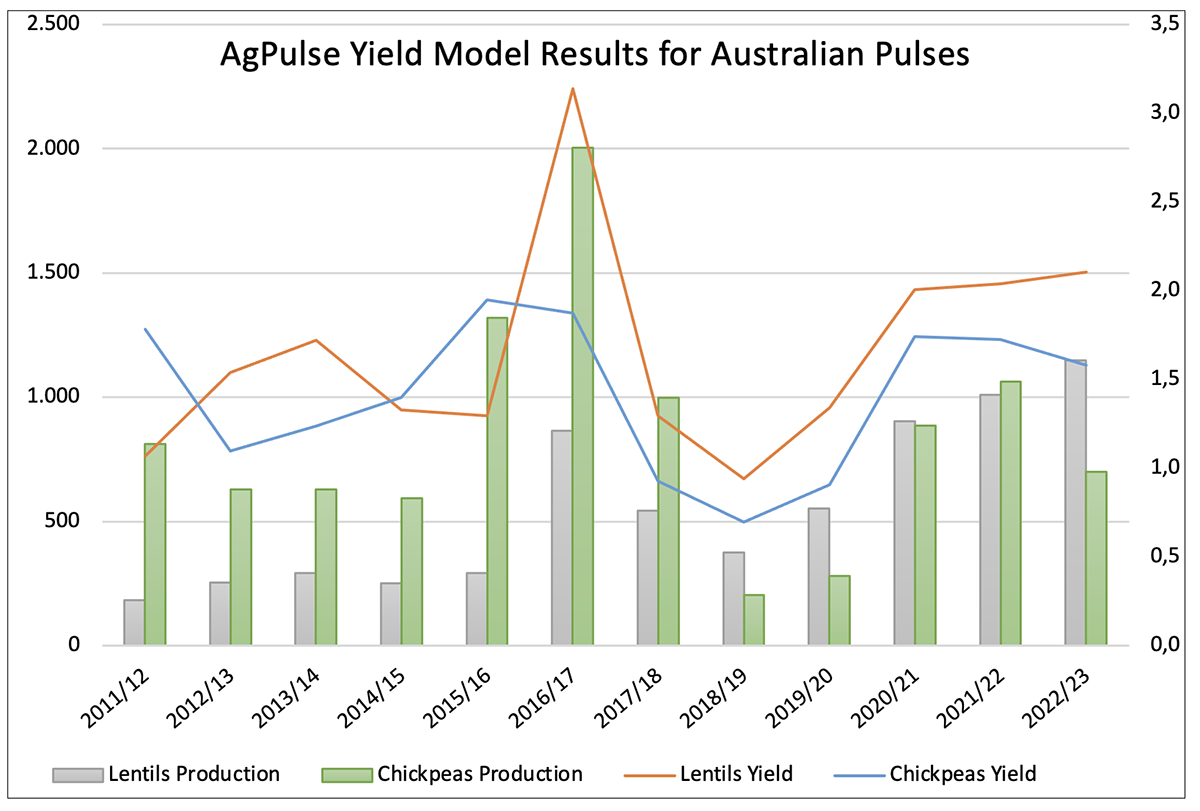August 31, 2022
Ahead of the September 6 ABARES report, Gaurav Jain of AgPulse Analytica shares insights into Australia’s chickpea and lentil production, looking at rainfall, acreage and yield estimates.

Ahead of the September 6 ABARES report, Gaurav Jain of AgPulse Analytica shares insights into Australia’s chickpea and lentil production, looking at rainfall, acreage and yield estimates.
The Australian Bureau of Agricultural and Resource Economics and Sciences (ABARES) is set to release its crop report on 6 September. Usually, this report shows a clearer picture than the June report with production numbers that are generally closer to the final tally.
For the third year in a row, Australian farmers are looking at bumper yields for most of their crops. The export facilities will have to stretch themselves out throughout the year to get the production and carryover out in the international markets. The elevation margins have remained great in MY 2021/22 and, at AgPulse, we expect this to continue, keeping the in-land basis in the negative region.
Australian pulses will face competition in MY 2022/23, both from Tanzania’s desi chickpeas and an expected massive production of Canadian peas and lentils. Australia is likely to have a sizeable carryout in desis for MY 2021/22, which, despite a production decrease, will boost its exportable surplus.
At AgPulse, we contest the reliability of the ABARES production numbers. The gap in official data for exports and production has been widening since the beginning of the last decade, showing consistent underestimation of production by the government agency.
AgPulse uses a proprietary yield model, which has been successfully deployed across crops of chickpeas, lentils, peas, wheat, corn, soybean and rapeseed for all major producers. The yield model is based on weather data, soil conditions, crop progress and yield trends induced by technological advancement. We have no concrete way of obtaining the acreage numbers other than through government sources and so for this study, we are using acreage data published in the last ABARES report.
This year, many of the producing areas received higher-than-normal rainfall.

Wetlands, while promoting plant growth, also hindered planting earlier in the season. In its June report, ABARES showed a decrease in chickpea planting across states, notably in Queensland, while lentil acreages reached record levels this season.


We are expecting record yields for the Australian lentil crop while chickpeas yields are likely to remain average. The conditions in Queensland were not as conducive as in Victoria and South Australise, impacting the regional yields.


To discuss the yield model in detail and wider pulses balance sheets, you are welcome to reach out to Gaurav Jain at gaurav@agpulse.net
Disclaimer: The opinions or views expressed in this publication are those of the authors or quoted persons. They do not purport to reflect the opinions or views of the Global Pulse Confederation or its members.